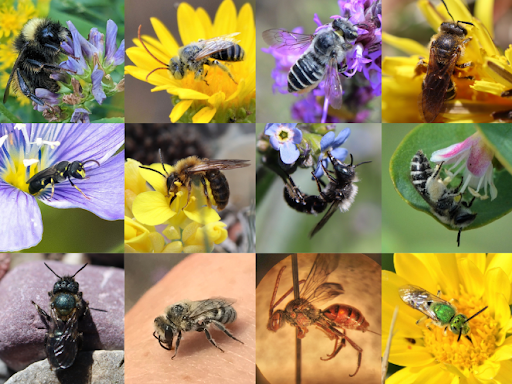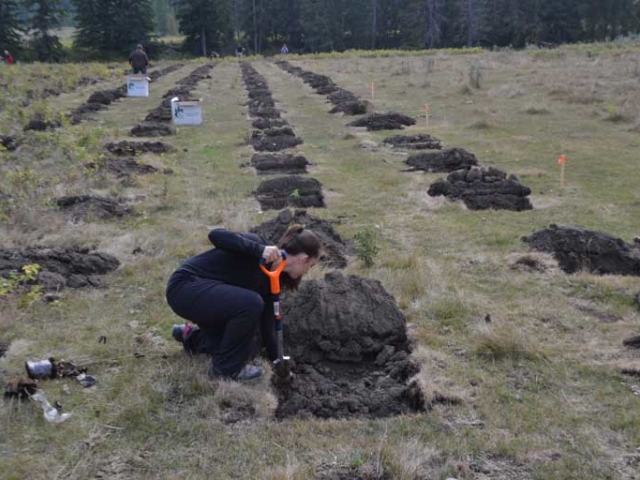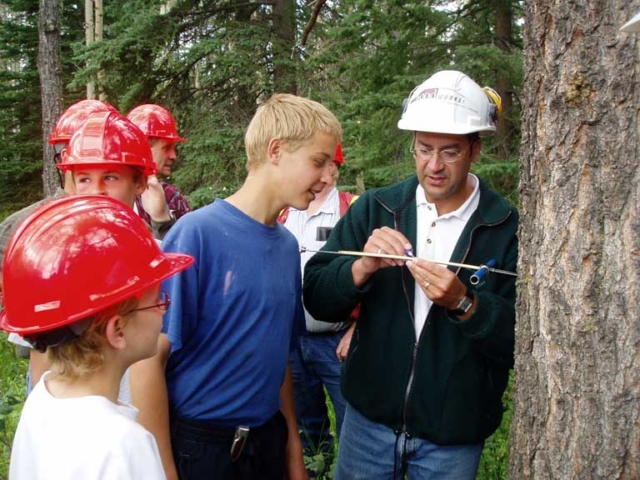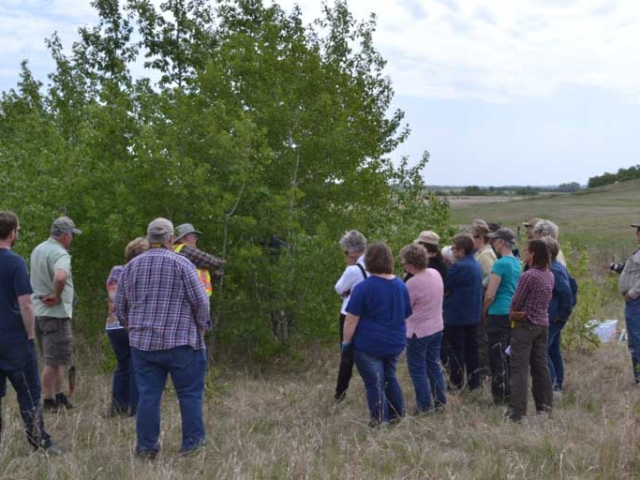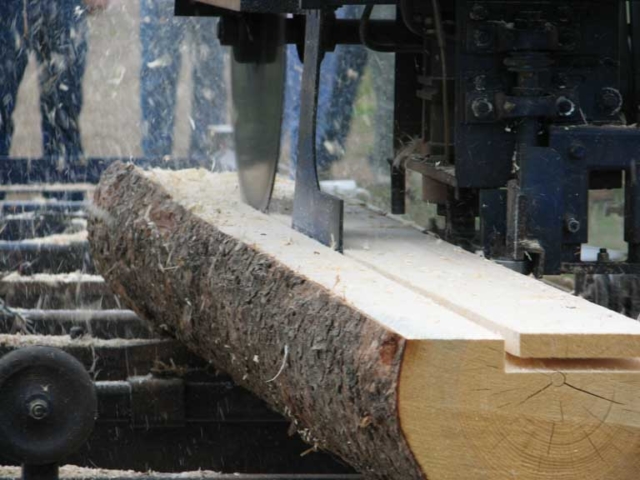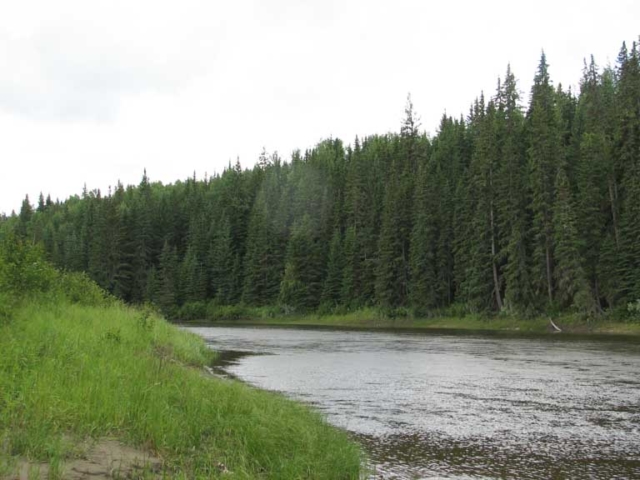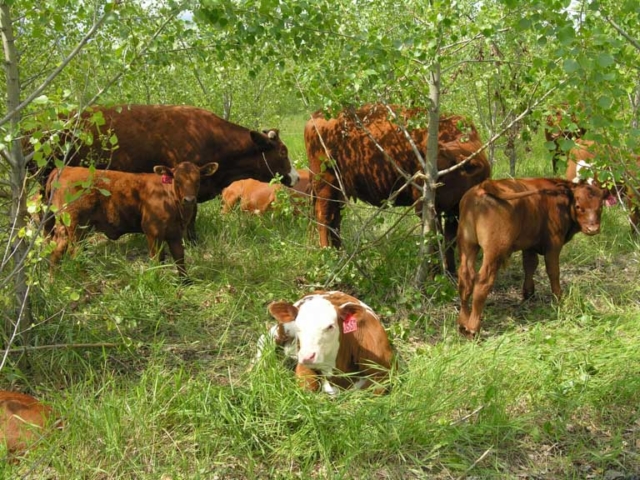Supporting Our Native Bee Species
Feature Image: A sample of the native bees of Alberta, via Alberta Native bee Council
When people think about bees, honey bees are typically what comes to mind but did you know that there are hundreds of other species as well?
The Alberta Native Bee Council has found that 375 of Canada’s 903 bee species can be found in Alberta! Check out the link in the additional reading section at the end of this blog post to learn more about this great organization and the resources they provide.
These 375 species showcase a wide diversity of nesting habits from ground dwelling colonies of bumble bees, to solitary mason bees that can make use of the little holes drilled in bug hotels that people build. One thing all these species have in common is that they rely on native plant species and natural habitats to thrive.
Here is a bit more information we have compiled at the Agroforestry and Woodlot Extension Society on the two major ways you can help support our native bee populations; providing shelter, and providing forage.
SHELTER
Cavity Nesting
The diversity of bees requires a diversity of nesting habitats. Some prefer small cavities above ground, some below. Some love open soil, some love the organic mulch or duff that builds up in healthy forests. For the most part, they can be divided into cavity nesting and ground nesting bees.
If you are looking to provide shelter for cavity nesting bees, the Alberta Native Bee Council recommends for bee hotels to be used with caution and that if you are going to be encouraging these solitary bees to nest in high density with your bug hotel, you should have a plan to clean it out and use a model that is easy for this, so you don’t accidentally add to the disease and parasite pressure on these species. It can be better to focus the same amount of space or resources on other methods of providing shelter for these bees or even just providing forage.
In addition to built structures, you can drill holes into existing deadwood or untreated wood in your landscape. You can also leave dead branches on trees that do not pose a risk and allow some of the wood burrowing species to do their thing. Planting native species with hollow stems and leaving garden cleanup until we are consistently above 10C in the spring is a great way to support native bees as well. If you must clean up, pile the material someplace out of mind until it does warm up and dormant insects can emerge. You never know who might be calling that hollow goldenrod stem home for the winter.
Ground Nesting
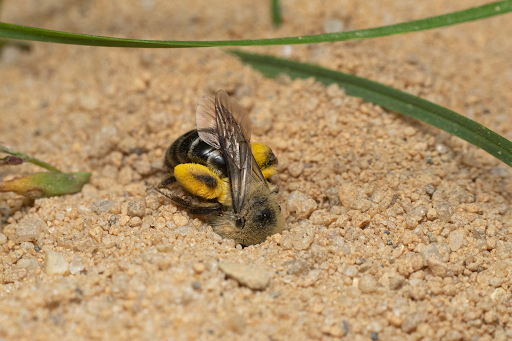
This aster mining bee (Andrena asteris) is excavating a nest site in dry, well drained sand. (Photo: Nick Dorian via Xerces Society, ‘Why do some bees dig?’ link )
Many of our native bees are ground dwelling and appreciate a range of nesting conditions from undisturbed forest floor (or a good organic mulch layer) to disturbed eroded banks and open soil patches. I often see many ground dwelling bees show up at the edges of new gardens. Many native bumble bees seem to enjoy nesting under old logs and in areas with buried woody material. Consider diversifying your garden landscape or property to include different types of ground nesting sites. You can also build dedicated bumblebee nests, see the additional reading section for more information on that.
One great low cost way to build native bee habitat is to build a hibernaculum. Which is just a fancy word for a place where animals can hibernate. For insects, these are structures made of piled woody organic matter and softer organic matter. The main structure is made up of woody material like logs and twigs. Softer components like leaves, grass clippings, and reeds with hollow stems are great choices to fill in the gaps between the woody material. While some of these structures can be quite large, even hibernaculums of a couple cubic feet can be very beneficial for our native bees. It is important to be careful not to use grass clippings or yard waste that have been treated with anything in these types of shelters. Having a section of these structures built below as well as above ground can provide a great diversity of nesting sites. Please note that these can also provide refuge for rodents and wasps/ hornets so they may not be appropriate for all settings.
FORAGE
Another key component to supporting native bees is making sure they have enough to eat as well as a place to call home.
Domestic bees often outcompete native bees for pollen and nectar sources. This means if you are a beekeeper, practices such as supplementing your hives during early spring and the summer dearth is very important to limit their pressure on forage sources. You can also plant additional forage for them like clover, sainfoin, sweet clover, and phacelia. Flowering tree species can also be a great way to supplement your honey bees and shrink their forage range.
For those of you who are not beekeepers, anytime you can plant additional native forage species to support the bees is a great idea. Consider the bloom time of your gardens and try to keep something in bloom for as many weeks as possible. It is also a good idea to consider including a variety of different colors and shapes of flowers as different species of bee may have different preferences. Although native plants are ideal as they can also be host plants for other native insects, even incorporating some non native reliable bloomers to keep the bloom going can be a great idea in the home garden.
Willows are a key early forage source for all bees in our climate. They are one of the very first things to bloom in spring with their fuzzy catkins, bringing a flush of food for our native pollinator friends.
Winston Gamache
BSc Biochemistry, Biology Minor
Agroforestry Specialist
AWES
Additional Reading/Resources
Alberta Native Bee Council
https://www.albertanativebeecouncil.ca/
Solitary Bee Hotel Best Practices, Alberta Native Bee Council
Enhancing Nest Sites for Native Bee Crop Pollinators, Agroforestry Notes (FEB 2007), USDA NAC
https://www.fs.usda.gov/nac/assets/documents/agroforestrynotes/an34g08.pdf
Building And Installing Bumblebee Houses, AWES
https://www.awes-ab.ca/publications/building-and-installing-bumblebee-houses/
Recommended Native Pollinator Friendly Plants for The Boreal Forest Region of Alberta, AWES
https://www.awes-ab.ca/wp-content/uploads/2019/05/Boreal-Forest-Pollinator-Friendly-Species.pdf
Recommended Native Pollinator Friendly Plants For The Aspen Parkland Region Of Alberta, AWES
https://www.awes-ab.ca/publications/native-pollinator-friendly-plants/

